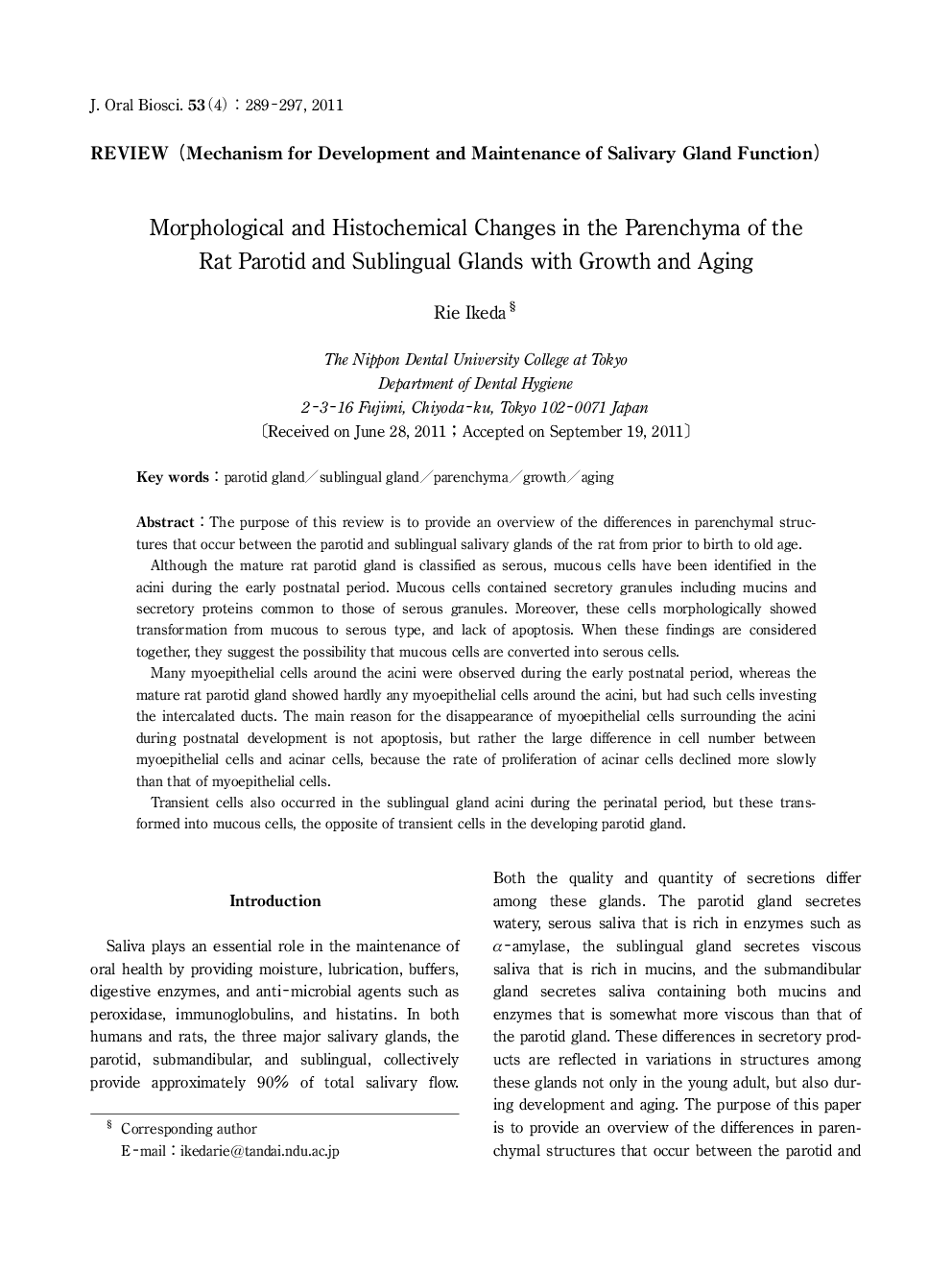| Article ID | Journal | Published Year | Pages | File Type |
|---|---|---|---|---|
| 2776946 | Journal of Oral Biosciences | 2011 | 9 Pages |
The purpose of this review is to provide an overview of the differences in parenchymal structures that occur between the parotid and sublingual salivary glands of the rat from prior to birth to old age.Although the mature rat parotid gland is classified as serous, mucous cells have been identified in the acini during the early postnatal period. Mucous cells contained secretory granules including mucins and secretory proteins common to those of serous granules. Moreover, these cells morphologically showed transformation from mucous to serous type, and lack of apoptosis. When these findings are considered together, they suggest the possibility that mucous cells are converted into serous cells.Many myoepithelial cells around the acini were observed during the early postnatal period, whereas the mature rat parotid gland showed hardly any myoepithelial cells around the acini, but had such cells investing the intercalated ducts. The main reason for the disappearance of myoepithelial cells surrounding the acini during postnatal development is not apoptosis, but rather the large difference in cell number between myoepithelial cells and acinar cells, because the rate of proliferation of acinar cells declined more slowly than that of myoepithelial cells.Transient cells also occurred in the sublingual gland acini during the perinatal period, but these transformed into mucous cells, the opposite of transient cells in the developing parotid gland.
